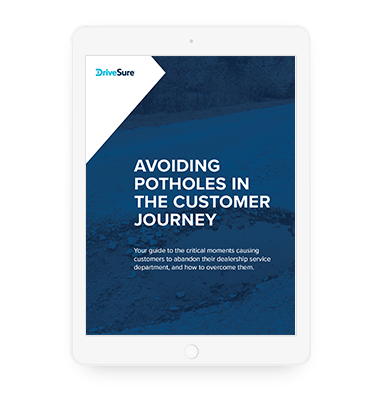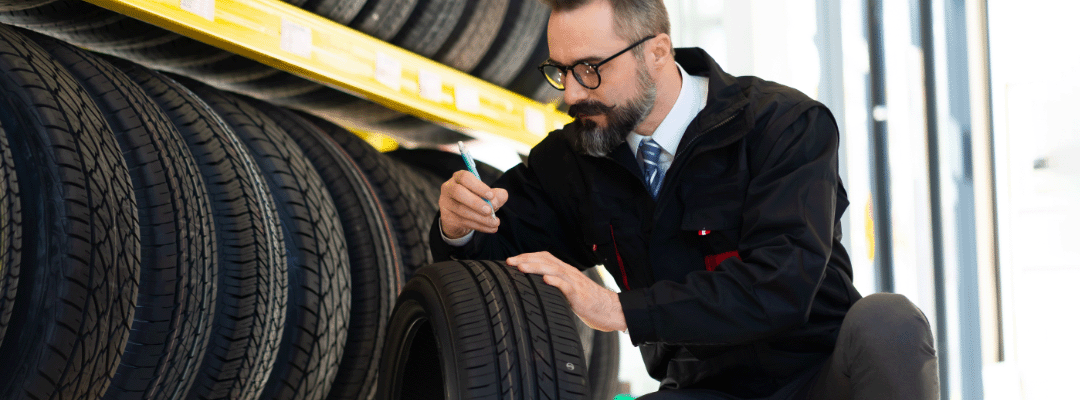How will the rise of electric vehicles affect revenue in your service drive? With Tesla now the most valuable car company in the world, it’s clear that the shift from combustion engines is no longer just a passing trend.
Sales for battery electric vehicles (BEVs, or simply EVs) have gone up substantially in recent years, and this is only expected to increase. Forecasts estimate that by the year 2030, approximately 40-50% of US vehicles will be electric, with half of US drivers saying that they’re considering a BEV for their next purchase.
Of course, with this new type of vehicle comes a drastically different set of service needs, and some dealerships are more prepared than others. Some are going to suffer major losses from the unique service needs of electric vehicles, but those who make changes now will fare much better than those who don’t.
The 2020 Dealership Service Retention Report
Insights from Nearly 2,000 Dealership Customers
How Battery Electric Vehicles (BEVs) Might Hurt Your Service Revenue
Battery Electric Vehicles (BEVs, or simply EVs) have caused a major shift in how vehicles get serviced, and many dealerships are already suffering from this.
BEVs require fewer visits and less overall service or repair maintenance than traditional vehicles (excluding battery replacement). On average, owners only service their EVs about ⅔ as often as internal combustion engine (ICE) vehicles, with only 54% of BEV owners saying they’d taken their vehicle in for service the past year.
Part of the reason for this is new technology. With regenerative braking, BEVs endure less pad and rotor war, making brake replacement less of a concern. With the combustion engine replaced with a battery for power, engine concerns are now nonexistent.
Worse still, many related maintenance items have also been eliminated. Engine and air filters, spark plugs, fuel management, lubricants, drive belts, and spark plugs — these were all part of the traditional system, and no longer exist in BEVs.
Considering how most moving parts in traditional vehicles were only supporting the engine in some way, this represents a major reduction in serviceable parts and related revenues.
While EVs don’t require as much maintenance as traditional cars, they can still provide your dealership with service revenue, if you make some changes.
How Tires Can Save Service Drive Revenue
Despite all the advantages of BEVs for drivers, there is some good news for dealerships: BEV tires get worn out much faster than ICE vehicles, requiring more frequent rotations and replacements.
BEVs have replaced engines with a battery, and that battery is very heavy. The average Tesla weighs about 4,500 pounds, but if you look at a gas-powered car of a similar size, the weight is only around 3,000 pounds. This puts a huge amount of additional stress on the tires.
On top of the additional weight, BEVs proudly advertise instant torque, which (while a joy to experience) puts even more stress on those tires. For these reasons, BEVs tend to need heavier-duty tires with more structural support, but this only goes so far.
So the advantage to dealerships is twofold:
- Electric vehicle owners must return more often for tire service, despite requiring less maintenance for other traditional parts. Instead of typical tire replacements every 40,000 miles, BEV owners must return closer to the 20 to 30 thousand mile mark, with tire rotations as frequently as every 5,000 miles.
- When electric vehicles are brought in for tire replacements, they require higher-quality tire choices. These tires tend to be 10 to 40 percent more expensive than traditional tires.
In short, dealerships whose service drives have a tire-focused business model will perform much better than those who don’t, likely even balancing out revenue loss from the decline in traditional services. With the right preparation, service departments can handle these changes smoothly.
Those focusing on quick lube or general service, however, are going to lose significant revenue from the rise of BEVs, unless they shift their strategy.
Learn the 5 Ways Dealerships Can Better Compete for Service Customers.
Tires Are Still an Untapped Retention Opportunity for Most Dealerships
Even among drivers who identify themselves as “extremely loyal” to the dealership where they service their vehicle, only 48 percent purchased their last set of tires from that dealership.
One big cause of this problem (as we found in our Dealership Service Retention Report) is that vehicle owners often don’t even know their dealership handles tire repair or replacement. This provides a major opportunity for dealerships to increase service department revenue — not just from BEV owners, but for all customers.
When conducting this study, we found 33 percent of respondents already prefer to get tire rotations, replacements, and repairs done at the dealership.
To capture more of this untapped market share, dealerships must first make sure their customers are actually aware of their tire offerings. In our research mentioned above, 24 percent of vehicle owners were unsure if their dealership sold tires.
Addressing the low awareness of your tire service is a great start, but better communications and promotions alone won’t solve the problem. Dealerships must also differentiate themselves from the competitors who offer tire sales and services.
One way your dealership can stand out is by providing additional value, such as offering a set of unique benefits from DriveSure, which vehicle owners automatically renew each time they come in for service.
From routine tire service to repairs from road hazards, DriveSure benefits bring more BEVs back to dealerships
BEVs aren’t immune to road hazards, and warranty coverage for tire issues is tricky. Unless a customer purchases a specific tire and wheel policy, the tires are rarely covered in the way a customer expects.
However, if they bought their car from a dealership that offers DriveSure benefits, their issue can be fixed at no cost.
In other words, whenever a vehicle owner has a flat, their dealership becomes the first place they think of, because they can get the flat fixed for free. And if it turns out that they need the tire replaced? That’s covered too.
This helps customers associate your dealership with tires, rather than thinking of the tire shop or big box retailer down the road.
When you offer benefits like these, it’s easy to see why 70 percent of vehicle owners return at least twice per year to dealerships offering DriveSure.
Master These Moments to Keep Your Customers
Discover the 5 critical moments causing customers to abandon your dealership service department, and how you can overcome them.


